
Attention to detail isn’t just a nice-to-have skill to flaunt on CVs and cover letters. It is critical for workplace productivity, error-free work, and brand reputation. That is why HR managers generally test every candidate’s level of concentration and focus to land the right employees. This article will explore how to identify detail-oriented individuals, the importance of attention to detail in the workplace, and how to improve the skill.
What Is Attention to Detail?
Attention to detail is the ability to notice both the fine points and the bigger picture when working on a task or project. It is a soft skill characterized by a dedication to accuracy, precision, and diligence when handling tasks or dealing with situations. Having this ability means examining, understanding, and breaking down the specifics of any job in order to improve results. People with this skill see what others often overlook and catch potential errors before they become big problems.
Having attention to detail typically involves:
- Accuracy: Ensuring work is error-free, factual, and reliable by sticking to established guidelines.
- Precision: Prioritizing correctness and providing specific details in work and communication.
- Thoroughness: Completing tasks without leaving any minute aspect unchecked, unfinished, or unverified.
- Organization: Structuring tasks, time, and resources effectively to maintain and improve productivity.
- Focus: Maintaining concentration and avoiding distractions to finish tasks in time and without errors.
- Problem-solving: Analyzing situations, identifying challenges, and developing effective solutions.
- Quality: Producing work that meets or exceeds high standards of excellence.
What Does “Eye for Detail” Mean?
Having an eye for detail is the ability to spot small aspects that others might overlook in various tasks or projects. This trait allows individuals to recognize inconsistencies, errors, or areas requiring improvement, because they meticulously observe and analyze details.
What Does Detail Oriented Mean?
A detail-oriented person consistently focuses on ensuring accuracy of every part of a task. This meticulous attention helps ensure that all aspects of the task are completed correctly and to the highest standard.
Examples of Strong Attention to Detail Skills
Moreover, detail-oriented people possess and demonstrate the following core detail oriented skills:
- Active listening skills
- Critical thinking skills
- Analytical skills
- Observational skills
- Time management skills
- Organization skills
Information processing
Being attentive to detail means being able adopt active listening, critical thinking, analytical, and observational skills to clearly understand colleagues, analyze and interpret data from several sources, and grasp task instructions and objectives.
Task management
Individuals who prioritize attention to detail naturally excel at task management. They use effective organization, time management, and resource allocation to prioritize tasks, avoid or minimize stress, meet deadlines, and optimize their productivity.
Quality assurance
This skill involves understanding and setting standards for every task and taking measures to ensure high-quality work is consistently delivered. Detail-oriented people leverage their meticulous natures to identify, analyze, and rectify issues to ensure accuracy and deliver superior outcomes.

How to Improve Attention to Detail at Work
Before going into the specifics on improving attention to detail, let’s briefly talk about why people often lack concentration.
What causes poor attention to detail?
Losing concentration is a common work phenomenon, and it can be caused by noisy coworkers and domestic situations when working from home. Multitasking can also remove attention from critical aspects of a particular job when you switch between tasks without finishing any one.
Further, tight deadlines can pressure you to hasten work, leading you to overlook key elements in a task. This situation almost always produces errors and mistakes. That is why visionary CEOs and HR managers insist on time trackers, timesheets, and task management tools.
But there’s more. Mental and physical fatigue (the common symptoms for burnout) can significantly affect cognitive function and anyone’s attention to detail skills. According to a survey by the American Psychological Association, 3 in 5 workers attributed burnout to a lack of energy, interest, and effort at work.
Ways to Improve Attention to Detail
Some individuals naturally have the knack to always check and recheck their work to ensure no detail is overlooked. For others, they have to cultivate a strong attention- to- detail mindset. Whichever group you fall into, you can always use the following steps to improve how you concentrate, improve quality, and eliminate errors:
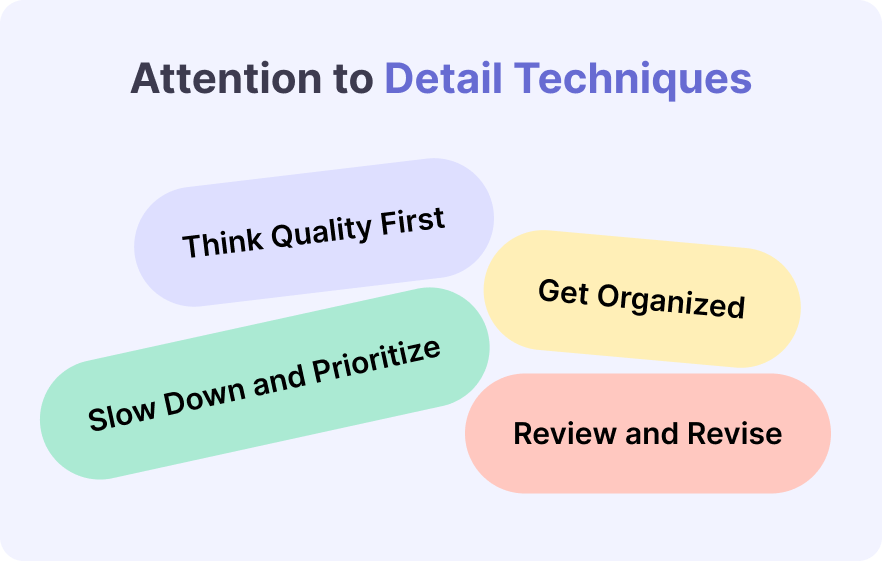
Think quality first
You’ll be more motivated to stay focused when quality is your main goal. Here are different ways to ensure that happens:.
- Set high standards and benchmarks: You must recognize quality to achieve it. So, define what makes a work excellent before you start or assign any task. You can deploy assessment indicators to measure and score each task’s quality. That way, you can ensure your jobs do not fall below specific standards.
- Ensure correctness and accuracy from the start: Cultivate a mindset where quality is the foundation of your work rather than an afterthought. Instead of relying on your proofreading and review session to find and weed out errors, ensure you account for precision, thoroughness, accuracy and attention to detail as you undertake tasks. Double-checking after the work is complete should serve as an additional measure to guarantee excellence.
- Internal motivation: Find intrinsic reasons to care about the details. Connect your work to a larger purpose, whether it’s contributing to a team goal, satisfying a customer, or simply taking pride in craftsmanship. When work means something personally important, no detail is ever too small to show more attention.
- Accountability: Hold yourself accountable for mistakes. Don’t dismiss errors when you or someone else finds them. Analyze why they happened and how to prevent them in the future.
Get organized
Getting organized involves optimizing your workspace, creating an efficient work system, managing your time, and using helpful utilities to improve your focus, eliminate distractions, and stay sharp. But how do you do all that? Let’s take a look.
- Optimize your workspace: A cluttered environment leads to a distracted mind. Keep your physical and digital workspaces tidy. These areas include your desk, computer files, and even your email inbox.
- Practice efficient task and time management: You can use task and time management tools and techniques to create task lists, determine how you execute each job, and eliminate decision fatigue.
Time management techniques such as time blocking and time mapping will make sure you avoid rushed work and improve decision-making. Task management strategies such as task batching and the “One Thing” technique can help you avoid distraction for extended periods.
- Time blocking dedicates specific chunks of your day to particular tasks or categories of work. By assigning fixed time periods to focused activities, you create mental boundaries that prevent multitasking and enhance concentration, ensuring you have adequate time for detail-oriented work that requires your full attention.
- Time mapping analyzes how you actually spend your time compared to how you intended to spend it. This practice helps identify patterns where details tend to slip through the cracks, allowing you to make strategic adjustments to your schedule that protect your most productive periods for work requiring exceptional attention to detail.
You can execute these techniques effectively when you use reliable tools such as a time tracker app, task managers, and to-do lists apps.

- Use tools to keep work organized and maintain a system: We’ve mentioned that you can use time trackers and task managers to optimize your time and task management skills. You can also use project management tools, email management solutions, and other browser extensions to keep things more organized. If you head a team, you can use communication and workflow utilities to ensure workers are in sync.
- Delegate: If possible, delegate tasks that don’t require your direct attention to detail. This action frees up valuable time and reduces the pressure of trying to rush more work than you can handle.
Slow down and prioritize
Not handling important and urgent tasks first can cause you to race against time when pressing deadlines draw close. The following tips can help you slow down and boost your concentration.
- Avoid multitasking: Pay attention to one task at a time and make sure you finish it before switching to something else.
- Identify things that come first: Learning to prioritize can also help you eliminate multitasking. You can use task management tools and certain techniques that we’ll show you later on to identify tasks that you should handle first before moving on to others.
- Break tasks into smaller pieces: Some tasks are too large to handle as one objective. You can break them down into smaller, actionable items to improve focus on minute details.
Review and revise
The last lap of completing any job involves going over everything at least twice to address overlooked details. Let’s show you ways to achieve that.
- Proofreading: The standard review process involves looking for inconsistencies such as typos, grammatical errors, factual mistakes, and missing information. Depending on your type of project, you can use proofreading and error-checking programs to straighten out other wrinkles. Sometimes, your editing skills may not be enough, and you’ll need a fresh set of eyes, especially if it’s a collaborative effort. Ask a colleague or friend to review your work. They might catch details you may have missed. Proofreading skills apply to many sectors, such as blog writing, academic research, legal documentation, and business communications.
- Checklists: Develop checklists for recurring tasks to ensure you consistently cover all the necessary details. This method helps with keeping track of quality standards.
- Continuous improvement: View mistakes as learning opportunities. Analyze why they happened and use that knowledge to refine your processes and improve your attention to detail over time.
5 Bonus Techniques to Advance in Attention to Detail
Encouraging the following techniques can help any company’s staff improve how they focus on work.

1. The Eisenhower Matrix
The Eisenhower Matrix, also known as the Eisenhower Box, is a productivity tool named after former U.S. President Dwight D. Eisenhower. It helps you group urgent and important tasks into four quadrants based on their level of importance. The technique is designed to help you avoid picking random, unimportant tasks just because they are urgent. That way, you can prioritize the critical ones.
Here are the four quadrants:
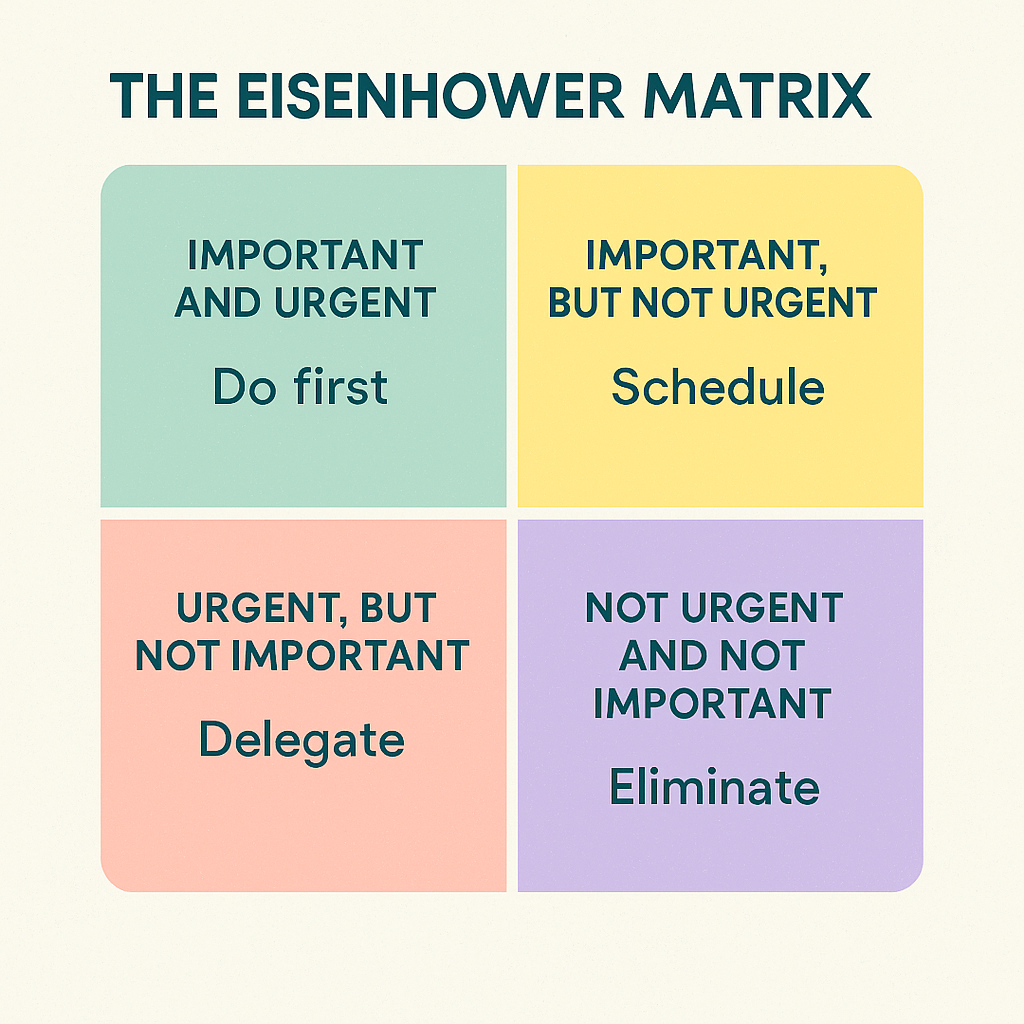
- Important and urgent (Do first): These tasks that are critical to your core project and have close deadlines.
- Important, but not urgent (Schedule): Deadlines are still considerably far away, but the tasks still have immense contributions to long-term project goals. They should be scheduled for later, but not too close to their deadlines.
- Urgent, but not important (Delegate): These are less critical tasks with pressing deadlines. Delegating such tasks can free up your time to focus on more important matters.
- Not urgent and not important (Eliminate): Tasks that are neither urgent nor important should be eliminated or minimized. Spending time on these tasks can be considered a waste of time and resources.
2. The “One Thing” technique
The “One Thing” technique involves identifying and focusing on the most important task or goal that will make everything else easier or unnecessary. Gary Keller and Jay Papasan helped make the productivity strategy a mainstream concept through their book “The ONE Thing: The Surprisingly Simple Truth Behind Extraordinary Results.” Here’s how you can apply the technique to improve your attention to detail:
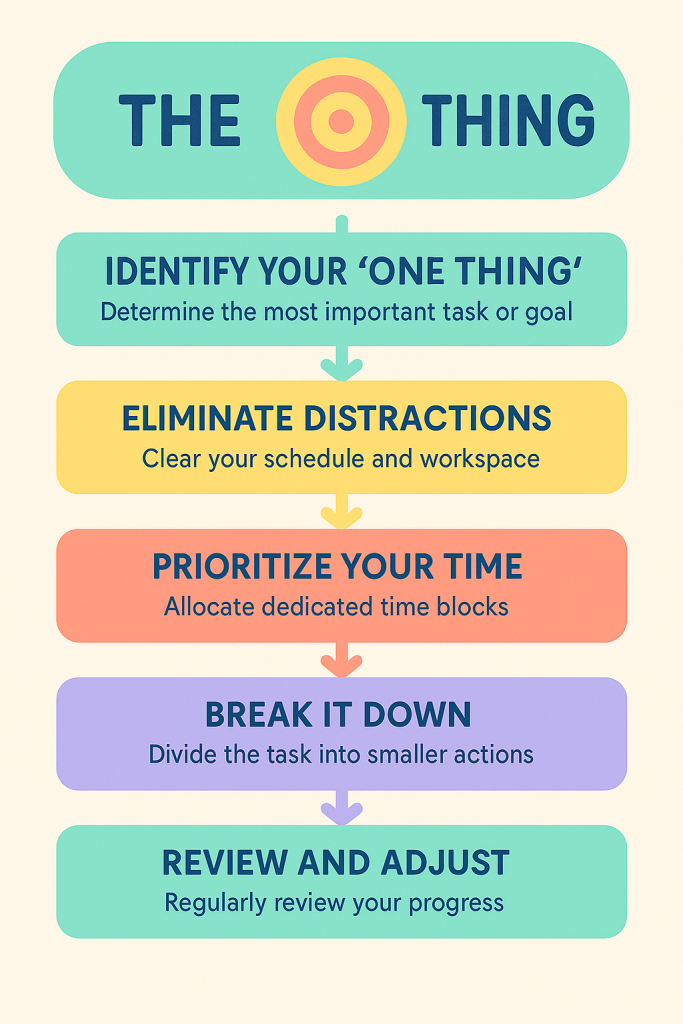
- Identify your “One Thing”: Determine the one task that, when accomplished, will have the most significant positive impact on your goals.
- Eliminate distractions: Clear your schedule and workspace of distractions to focus solely on the identified task.
- Prioritize your time: Allocate dedicated time blocks to work on the task without interruptions.
- Break it down: If it is a large task, break it down into smaller, manageable actions.
- Review and adjust: Regularly review your progress on your one thing and adjust your approach if needed.
3. Color coding
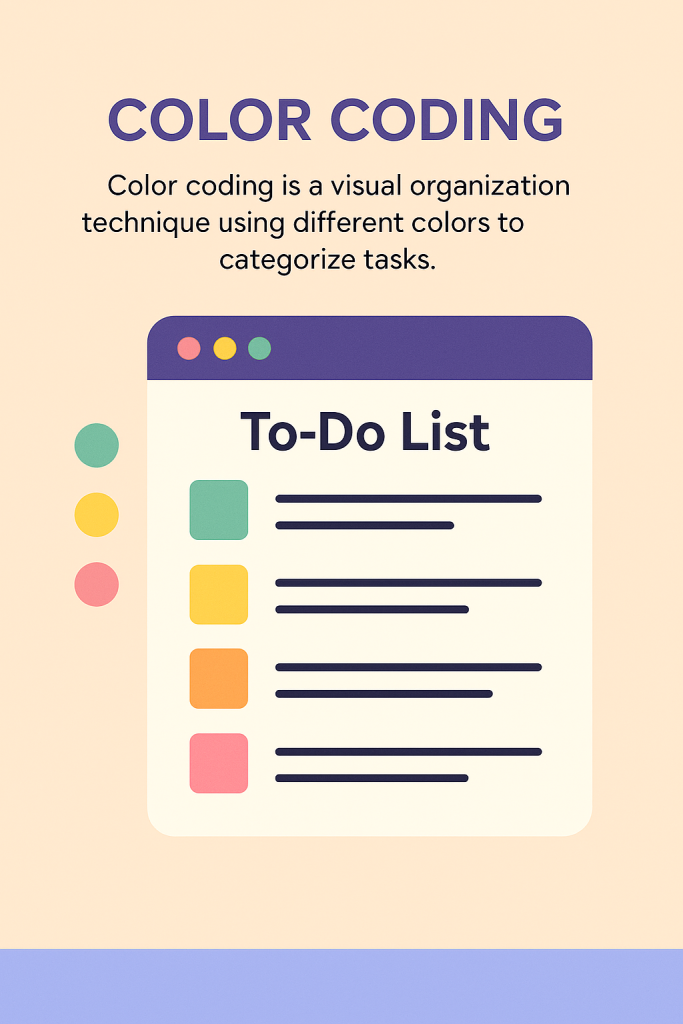
Color coding is a visual organization technique commonly used for scheduling, task and project management, prioritization, and file organization. It involves assigning different colors to categories, tasks, or items to help you identify and differentiate them.
You can use colors to identify every job’s priority level at a glance, group similar tasks, and signal current status. Color codes will help you recall tasks more easily, especially what’s yet to be completed, and boost productivity.
The technique can also improve team collaboration, as specific colors will communicate a task’s urgency and status.
4. The “Five Whys” technique
Toyota’s founder, Sakichi Toyoda, created the “Five Whys” technique in 1930 to identify and analyze the root causes of production issues. It is a problem-solving method that allows you to work your way backwards until you identify the underlying reasons for problems rather than surface-level symptoms. Here’s how you can use the technique:
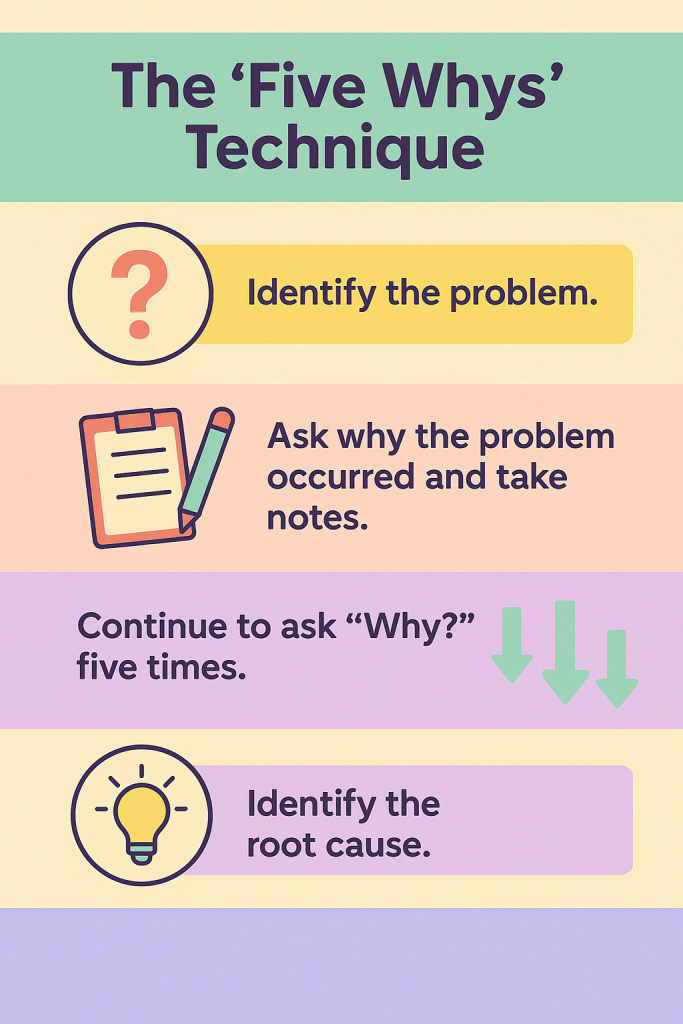
- Identify the problem.
- Ask why the problem occurred and take notes of your first answer.
- Continue asking “why” for every answer you receive or produce until you reach the starting point of the chain of events or no longer receive meaningful feedback.
- The process may take more or less than 5 whys, depending on the problem.
- Identifying the problem’s root cause helps you to formulate effective solutions to rectify the problem and prevent recurrences.
5. The “Fresh Eyes” approach
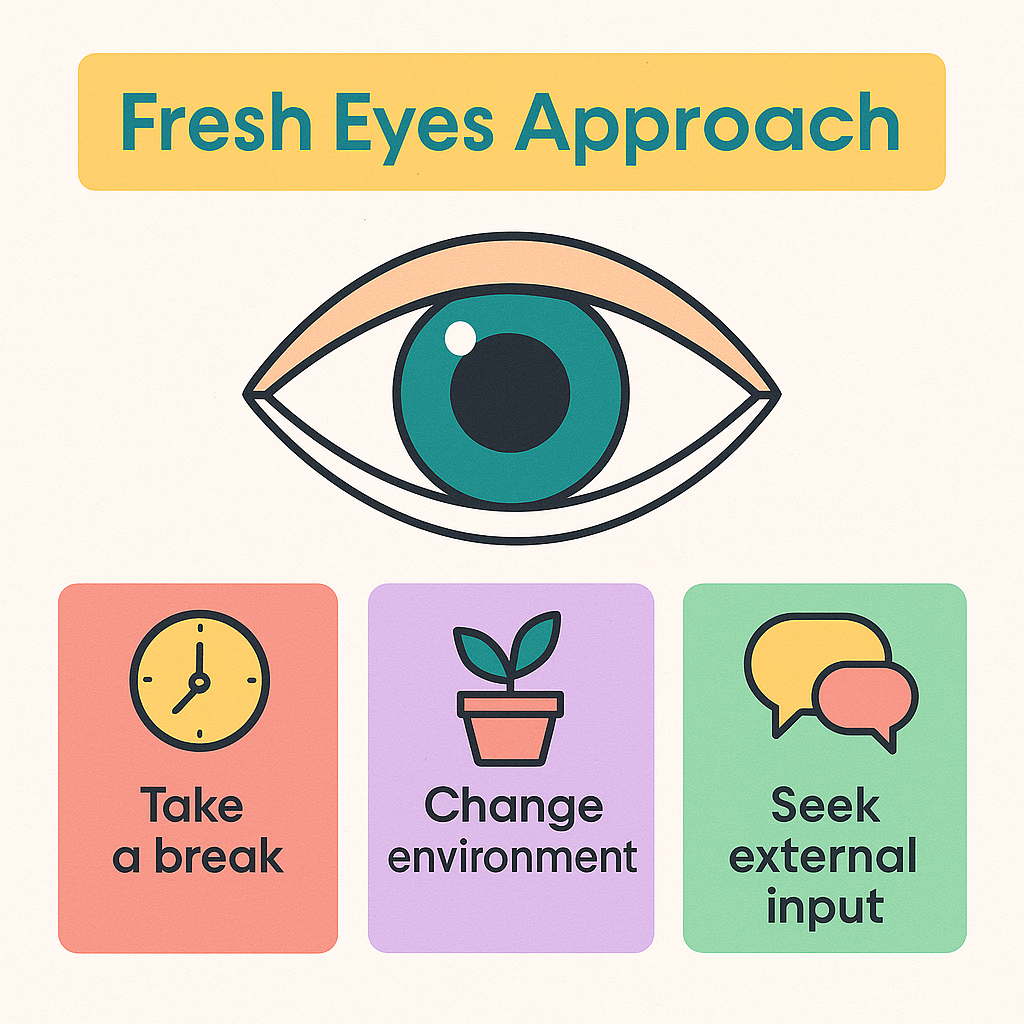
The “Fresh Eyes” approach involves looking at a situation, problem, or project from an external perspective or fresh viewpoint. The technique encourages people to take breaks and review their work with rested eyes and mind, change their environment, and seek external input from people not directly involved with the project.
Conclusion
Paying attention to small details to ensure that every aspect of the work is accurate and correct is an irreplaceable skill. Accuracy and attention to detail boosts any person or organization’s chances for success. You can always hone the skill through practice by continuously prioritizing thoroughness and accuracy.
FAQ
What is attention to detail?
Attention to detail is the ability to focus on both small and significant aspects of a task to ensure accuracy, precision, and high-quality work. It involves thoroughness, organization, and problem-solving skills to minimize errors and enhance efficiency.
How can I improve my attention to detail?
To enhance your attention to detail skills:
- Stay organized with checklists and time management tools like Traqq
- Minimize distractions and focus on one task at a time
- Proofread and double-check your work before submitting it
- Practice mindfulness and improve your observation skills
- Use productivity techniques like the Pomodoro method
What are some jobs that require strong attention to detail?
Many professions demand a keen eye for detail, including:
- Accountants and auditors
- Quality control specialists
- Editors and proofreaders
- Engineers and architects
- Data analysts and researchers
- Healthcare professionals (e.g., pharmacists, surgeons)
Can attention to detail be learned?
Yes! While some people have a naturally strong focus when it comes to attention to detail, anyone can develop this skill through practice, organization, and mindfulness techniques.
What causes poor attention to detail?
Common reasons for poor attention to detail include:
- Multitasking and frequent distractions
- Stress and fatigue
- Rushing through tasks without reviewing your work
- Lack of organization or planning
What are some examples of attention to detail in action?
Examples include:
- Spotting a typo in a report before submitting it
- Noticing discrepancies in financial statements and fixing them
- Catching a design flaw before product launch and mitigating its effects on the product
- Carefully following complex instructions in out-of-the-ordinary situations
Is attention to detail more important than speed?
While speed is a critical element in any project, accuracy should not be sacrificed for efficiency. Keeping a good balance between working efficiently and making sure your work quality remains high is imperative to success in the workplace.



Your blog is very helpful to understand what is attention to detail. Thanks